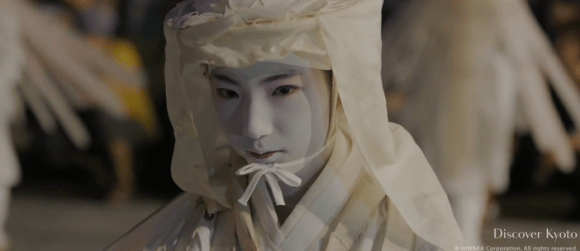
Many neighborhoods in Japan have festivals during the summer, often centered around the local shrine. They generally include processions, musical performances, and Shinto rituals, with the festivities lasting a day, or maybe two if they stretch throughout the weekend.
Kyoto’s Gion district, though, does things on a grander scale. The Gion Matsuri (Gion Festival) starts on July 1 and runs for the entire month, with some sort of event happening almost every day. And while most non-residents can’t clear out enough of their schedule to sped a few solid weeks in Japan’s former capital, this beautiful video gives the highlights of the event.
Although it’s a lively and enjoyable event now, the roots of the festival lie in some tragic events. Much like Tokyo’s gigantic Sumidagawa Fireworks Festival, the Gion Matsuri was started as an effort to appease angry gods. In the year 869, Kyoto had been struck with a plague, and so the Yasaka Shrine’s mikoshi (portable shrines) were paraded around the city in hopes that the placated gods would bestow their blessings upon Kyoto once again.
The same response was made during subsequent plagues, and in 970, the festival became a regular affair, gradually taking on the joyous atmosphere it has today.
One of the most important days of the festival comes on July 10, with the event known as Omukae Chochin. Since the miikoshi are the temporary homes of the gods, it wouldn’t due to have them sullied by earthly impurities during their processions. To purify their paths, men carry bundles of flaming bamboo on their backs, as fire is held to have a spiritually cleansing effect in Shinto belief.
Before the mikoshi arrive at the shrine, a number of dances are performed on the grounds the most impressive of which is the Sagi Odori, which means “Heron Dance.” A similar performance is held in Shimane Prefecture’s Tsuwano, in which dancers dress and move like the long-legged birds.
Other dances include the Komachi Odori, which originated in the early 17th century as part of a welcome given by Kyoto to visiting Shogun Tokugawa Ieyasu, the last warlord standing after generations of civil war.
▼ If people not only dance when you come to town, but still do it 400 years later, then you’ve got some serious juice.
Once the dancing is done, the three mikoshi themselves make their entrance preceded by a procession of lanterns.
Two weeks later, the Gion Matsuri has another big day with the Hanagasa Parade on the 24th. Hanagasa literally means “Flower Umbrella,” and those are exactly the things used to decorate the floats.
Mikoshi once again feature prominently, this time in small-sized versions carried by children. Kids actually play a large role in the parade, as other appear dressed as samurai or horseback-riding pageboys.
With its long history as a center of geisha culture, representatives from the city’s various geisha districts also appear, both atop floats pulled by attendants and onstage during a series of musical performances.
Also held on July 24 is the Kankosai. While the Mikoshi are publicly displayed during the Gion Matsuri, they spend the rest of the year in storage. So before they make their return to Yasaka Shrine, they need to be purified, which is the reason for the Kankosai.
Finally, on July 31, the last day of the festival, Eki Shrine is the site of the Nagoshisai. A sort of closing ceremony, the Nagoshisai is yet another purification ritual, but this time for human mortals, who’re blessed as they pass through a grass ring known as a chinowa.
After that, the festival comes to a close. We assume everyone heads home for some well-deserved rest and starts gathering their strength for the next Gion Matsuri, which is then just 11 months away.

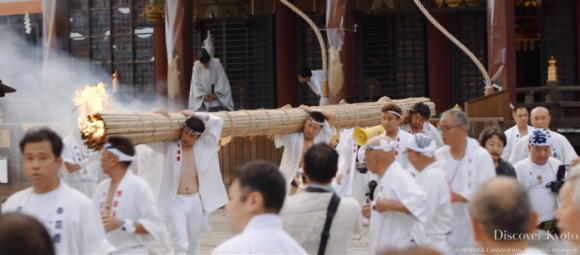
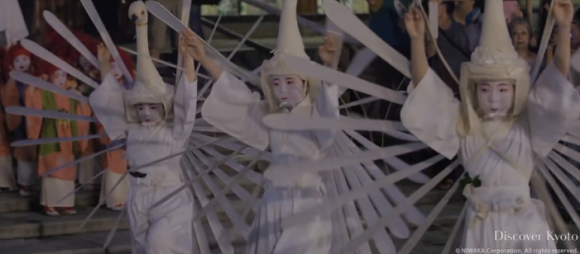
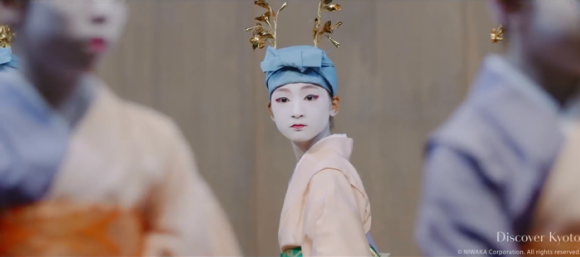
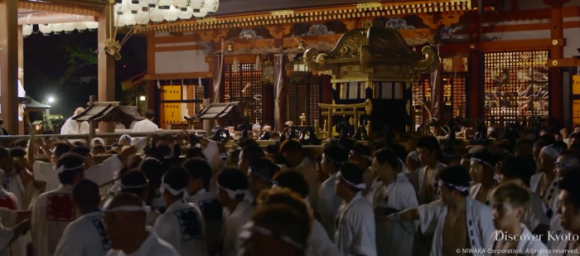
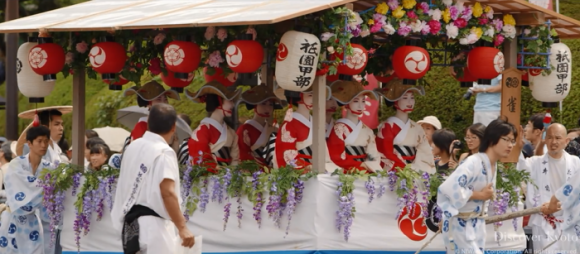
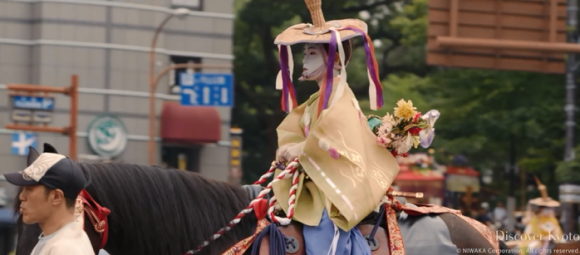
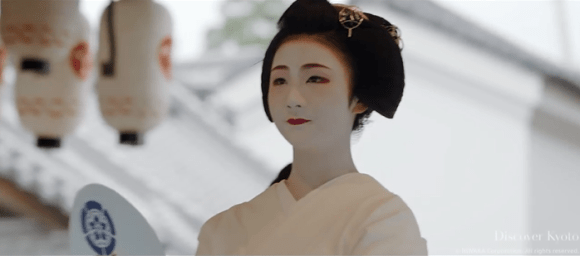
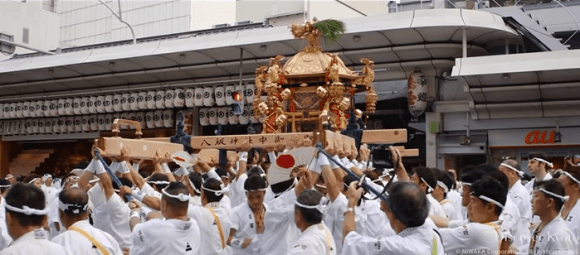
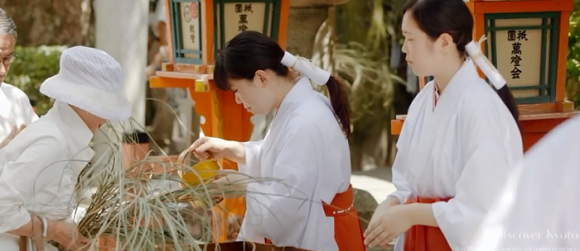
 The most crowded place in Tokyo? Might be the Kanda Matsuri festival, but it’s still awesome
The most crowded place in Tokyo? Might be the Kanda Matsuri festival, but it’s still awesome Kyoto hotel OMO5 Kyoto Gion offers Yojiya cosmetics Pretty Girl Room Stay for New Year’s season
Kyoto hotel OMO5 Kyoto Gion offers Yojiya cosmetics Pretty Girl Room Stay for New Year’s season Shinto shrine naked festival ritual asks men to cover up for first time in three-century history
Shinto shrine naked festival ritual asks men to cover up for first time in three-century history Japanese Penis Festival shrine distances itself from penis mascot
Japanese Penis Festival shrine distances itself from penis mascot Three reasons you should go to Kyoto right now
Three reasons you should go to Kyoto right now McDonald’s new Happy Meals offer up cute and practical Sanrio lifestyle goods
McDonald’s new Happy Meals offer up cute and practical Sanrio lifestyle goods All-you-can-drink Starbucks and amazing views part of Tokyo’s new 170 meter-high sky lounge
All-you-can-drink Starbucks and amazing views part of Tokyo’s new 170 meter-high sky lounge Super Nintendo World expansion gets delayed for several months at Universal Studios Japan
Super Nintendo World expansion gets delayed for several months at Universal Studios Japan Studio Ghibli releases new action figures featuring Nausicaä of the Valley of the Wind characters
Studio Ghibli releases new action figures featuring Nausicaä of the Valley of the Wind characters Kyoto’s 100 Demons yokai monster parade returns!
Kyoto’s 100 Demons yokai monster parade returns! More foreign tourists than ever before in history visited Japan last month
More foreign tourists than ever before in history visited Japan last month Studio Ghibli glasses cases let anime characters keep an eye on your spectacles
Studio Ghibli glasses cases let anime characters keep an eye on your spectacles McDonald’s Japan releases a pancake pie for new retro kissaten coffeeshop series
McDonald’s Japan releases a pancake pie for new retro kissaten coffeeshop series Starbucks reopens at Shibuya Scramble Crossing with new look and design concept
Starbucks reopens at Shibuya Scramble Crossing with new look and design concept Arrest proves a common Japanese saying about apologies and police
Arrest proves a common Japanese saying about apologies and police Disney princesses get official manga makeovers for Manga Princess Cafe opening in Tokyo
Disney princesses get official manga makeovers for Manga Princess Cafe opening in Tokyo Beautiful new Final Fantasy T-shirt collection on the way from Uniqlo【Photos】
Beautiful new Final Fantasy T-shirt collection on the way from Uniqlo【Photos】 Is the new Shinkansen Train Desk ticket worth it?
Is the new Shinkansen Train Desk ticket worth it? Foreign English teachers in Japan pick their favorite Japanese-language phrases【Survey】
Foreign English teachers in Japan pick their favorite Japanese-language phrases【Survey】 Japanese convenience store packs a whole bento into an onigiri rice ball
Japanese convenience store packs a whole bento into an onigiri rice ball We try out “Chan Ramen”, an underground type of ramen popular in the ramen community
We try out “Chan Ramen”, an underground type of ramen popular in the ramen community Studio Ghibli releases Kiki’s Delivery Service chocolate cake pouches in Japan
Studio Ghibli releases Kiki’s Delivery Service chocolate cake pouches in Japan Japan’s bone-breaking and record-breaking roller coaster is permanently shutting down
Japan’s bone-breaking and record-breaking roller coaster is permanently shutting down New definition of “Japanese whiskey” goes into effect to prevent fakes from fooling overseas buyers
New definition of “Japanese whiskey” goes into effect to prevent fakes from fooling overseas buyers Our Japanese reporter visits Costco in the U.S., finds super American and very Japanese things
Our Japanese reporter visits Costco in the U.S., finds super American and very Japanese things Studio Ghibli unveils Mother’s Day gift set that captures the love in My Neighbour Totoro
Studio Ghibli unveils Mother’s Day gift set that captures the love in My Neighbour Totoro Foreign passenger shoves conductor on one of the last full runs for Japan’s Thunderbird train
Foreign passenger shoves conductor on one of the last full runs for Japan’s Thunderbird train Domino’s Japan now sells…pizza ears?
Domino’s Japan now sells…pizza ears? New Japanese KitKat flavour stars Sanrio characters, including Hello Kitty
New Japanese KitKat flavour stars Sanrio characters, including Hello Kitty Kyoto creates new for-tourist buses to address overtourism with higher prices, faster rides
Kyoto creates new for-tourist buses to address overtourism with higher prices, faster rides Sales of Japan’s most convenient train ticket/shopping payment cards suspended indefinitely
Sales of Japan’s most convenient train ticket/shopping payment cards suspended indefinitely Sold-out Studio Ghibli desktop humidifiers are back so Totoro can help you through the dry season
Sold-out Studio Ghibli desktop humidifiers are back so Totoro can help you through the dry season Japanese government to make first change to romanization spelling rules since the 1950s
Japanese government to make first change to romanization spelling rules since the 1950s Ghibli founders Toshio Suzuki and Hayao Miyazaki contribute to Japanese whisky Totoro label design
Ghibli founders Toshio Suzuki and Hayao Miyazaki contribute to Japanese whisky Totoro label design Doraemon found buried at sea as scene from 1993 anime becomes real life【Photos】
Doraemon found buried at sea as scene from 1993 anime becomes real life【Photos】 Tokyo’s most famous Starbucks is closed
Tokyo’s most famous Starbucks is closed One Piece characters’ nationalities revealed, but fans have mixed opinions
One Piece characters’ nationalities revealed, but fans have mixed opinions We asked a Uniqlo employee what four things we should buy and their suggestions didn’t disappoint
We asked a Uniqlo employee what four things we should buy and their suggestions didn’t disappoint Princesses, fruits, and blacksmiths: Study reveals the 30 most unusual family names in Japan
Princesses, fruits, and blacksmiths: Study reveals the 30 most unusual family names in Japan Mystery Tourist Spot: Merlions in Japan?
Mystery Tourist Spot: Merlions in Japan? Kyoto now has Pokémon manhole covers as Generation 2 comes to the real-life Johto region
Kyoto now has Pokémon manhole covers as Generation 2 comes to the real-life Johto region We take a close-up look at some Japanese street food found at summer festivals【Photos】
We take a close-up look at some Japanese street food found at summer festivals【Photos】 Rainy day in Kyoto creates amazing photo of sakura above, below, and all around
Rainy day in Kyoto creates amazing photo of sakura above, below, and all around Better than mosquito repellent – The most eco-friendly (and spiritual) way to repel pests in Japan
Better than mosquito repellent – The most eco-friendly (and spiritual) way to repel pests in Japan Tokyo’s world-famous Kappabashi restaurant supply street’s annual festival is going on right now
Tokyo’s world-famous Kappabashi restaurant supply street’s annual festival is going on right now Sweet Japanese spring is in full bloom at Kyoto confectioner Gion Tsujiri!
Sweet Japanese spring is in full bloom at Kyoto confectioner Gion Tsujiri! Fights break out at Japanese fight festival
Fights break out at Japanese fight festival “Amazing Kyoto” shows us sides of Japan’s old capital we’ve never seen before — in two languages!
“Amazing Kyoto” shows us sides of Japan’s old capital we’ve never seen before — in two languages! Customize the green tea and traditional sweets parfait of your dreams in famous Kyoto shop
Customize the green tea and traditional sweets parfait of your dreams in famous Kyoto shop Step into a magical spirit world at the Motomiya Festival at Fushimi Inari Shrine in Kyoto
Step into a magical spirit world at the Motomiya Festival at Fushimi Inari Shrine in Kyoto Tasty art brought to life — enjoy unique recreations of illustrated food at the Pixiv Festival!
Tasty art brought to life — enjoy unique recreations of illustrated food at the Pixiv Festival! Exhibition on the 1,500 year-history of traditional Japanese women’s clothing to open in Shibuya
Exhibition on the 1,500 year-history of traditional Japanese women’s clothing to open in Shibuya Shimotsuki Matsuri: The extraordinary winter festival that inspired Ghibli’s ‘Spirited Away’
Shimotsuki Matsuri: The extraordinary winter festival that inspired Ghibli’s ‘Spirited Away’ Akutai Matsuri: Japan’s Verbal Abuse Festival, where insults and bad behaviour are encouraged
Akutai Matsuri: Japan’s Verbal Abuse Festival, where insults and bad behaviour are encouraged
Leave a Reply